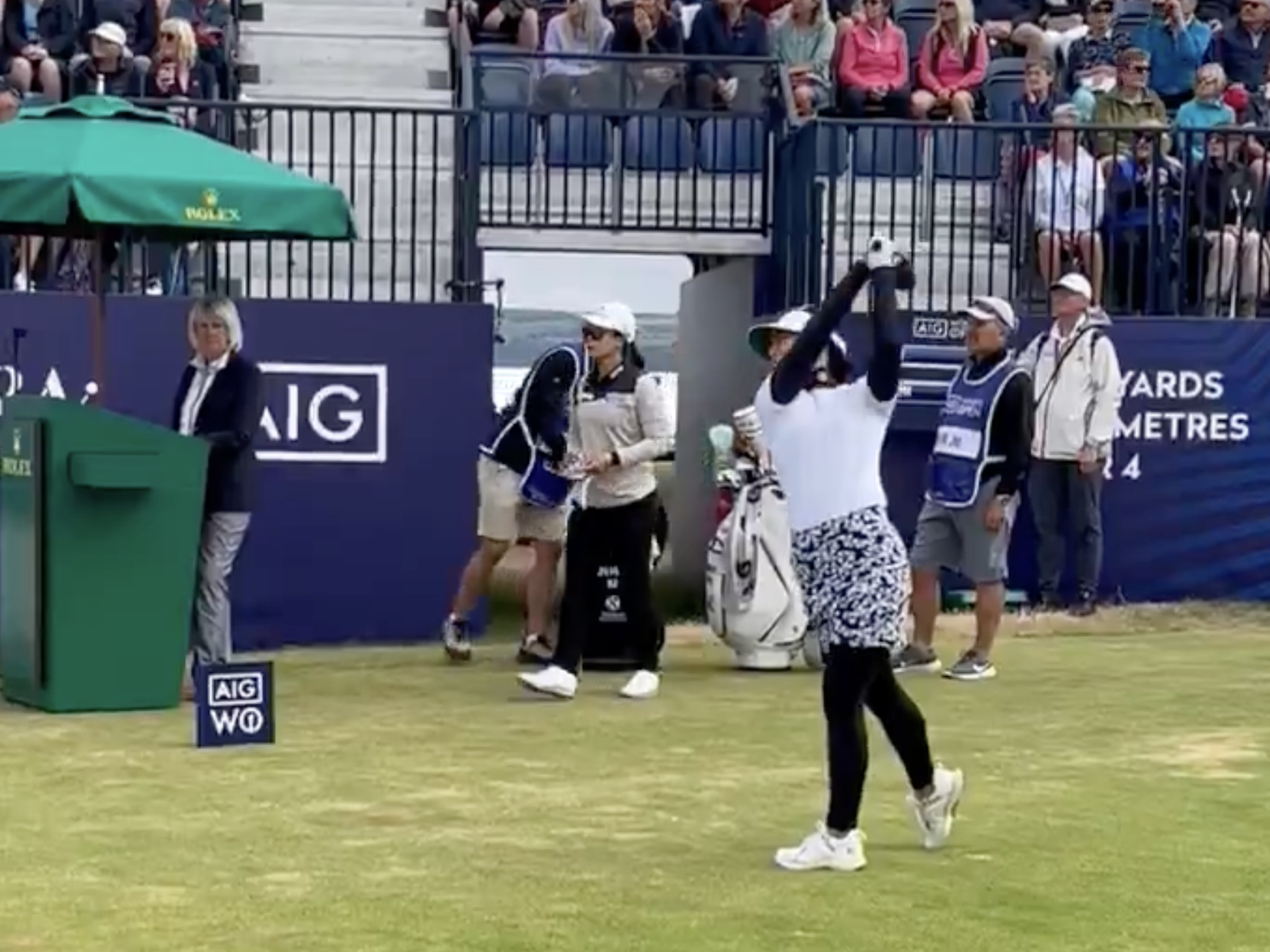19th Hole
This position paper is one of Arnold Palmer’s most important contributions to the future of golf

There are no shortage of excellent remembrances of Arnold Palmer on this the first anniversary of his passing. Viewing Palmer’s life and legacy through the lens of equipment, there’s enough to fill a multi-volume work.
However, an episode in 2000 and 2001, Palmer’s endorsement of the non-conforming Callaway ERC II for recreational play (and the ensuing furor), is too often swept under the rug. The King’s acknowledgment of realities the USGA and others resist remains as important today as it was 17 years ago.
In discussing whether the ERC II, with its taboo COR numbers, should be played by non-competitive golfers, Palmer pointed out the elephant in the USGA Handicap room
“For many, many years’ golfers have been establishing handicaps based upon scores achieved in recreational rounds of golf where the Rules of Golf have not been strictly followed.”
He also looks declining participation in the face. And although Palmer stopped short of calling for bifurcation, this blistering passage from a position paper he wrote for the Golf Channel remains spot on and is worth quoting at length.
“It has been said that I have played more rounds of golf with mid to high handicap golfers than any golf professional in history. I suspect this is true. Over the years I have played in thousands of pro-ams, competed in the Bay Hill Shoot Out with amateurs of all skill levels two or three times a week for many years, and have played in countless outings with my corporate sponsors, such as Pennzoil, Cooper Tire, and Verizon, and their customers.
“From this exposure to so many golfers of all skill levels over such a long period of time, it is to me an incontestable fact that there are two quite different games of golf being played in the United States and, for that matter, throughout the world. In this regard it is important to note that research shows only 14% of U.S. golfers shoot 85 or below, 44% shoot between 85 and 100, and 42% shoot over 100!
“Among most amateur golfers, particularly those who shoot 90 or above, it is common practice to avoid stringent enforcement of the rules in the interest of making the game more enjoyable to play. Mulligans, ‘hit `til you’re happy’, ‘gimme’ putts, preferred lies, and ignoring the stroke-and-distance rule are common everyday practices at municipal courses and, indeed, at most country clubs everywhere.
“I view the use of the ERC II in recreational play as no different than any of these other infractions of the rules that are routinely accepted in recreational play. Indeed, it seems to me that it is less objectionable inasmuch as it simply gives a player a chance to drive the ball farther and doesn’t necessarily guarantee a lower score on the hole. The player still must get the ball to the green and into the hole. On the other hand, mulligans and gimmes are, by their very nature, stroke savers.
“It is useful and important to remind ourselves of the genesis of the concern that the golf ball is traveling too far. Professional golfers were reaching such prodigious lengths that there was a growing concern that many historically great tournament golf courses could become obsolete. This is a legitimate concern, but its relevance to the use of a non-conforming driver by any golfer is remote at best. First of all, if there is any problem with extra distance off the tee, it relates to professional golfers only. Secondly, the lengths which these professional players are hitting the ball is not confined to the driver, but applies to all other clubs in the bags as well.
“And, finally, there are other reasons for this increased length beyond technological improvements in clubs. Principal among these are the technology of the golf ball and the superb physical condition of today’s professional golfers and today’s courses. The bottom line on this is that there are very, very few, if any, amateur players who pose any serious threat to the obsolescence of any golf course anywhere.”
The USGA, on the other hand, argues that any round where a player is keeping score is “competitive.” It follows, then, that they expect the Rules of Golf are followed to the letter of the law in all posted scores. This is insane. Palmer’s position was one of sense in the face of ivory tower lunacy. It remains so.
Palmer never faltered from his initial endorsement of the ERC II for recreational use. In wrapping up the position paper, Palmer wrote.
“ I approve of the ERC II for recreational/leisure play. I do not do this for money or for any reason other than my lifelong interest and love of the game. At a time when the game is not growing, when there are more former golfers than active golfers, it seems clear to me that everyone who loves the game and wants to see it grow must support reasonable efforts to make the game more enjoyable, more fun.”
Again, Palmer was right on the mark then. He based his opinion on a both a bounty of first-hand experience and respect for the game. Non-conforming drivers didn’t catch on, but the soundness of his argument means the King continues to speak to us as we debate imposed limits, the distance of the golf ball, participation, the Rules of Golf, etc, after his passing.
The full text is well worth a read as you remember Mr. Palmer today. And if you’d like a refresher on the ERC II issue, this CNN Money article from 2001 outlines things nicely.
19th Hole
‘Don’t think I’ll sleep well tonight’ – LPGA pro offers candid take following rough AIG Women’s Open finish

An opening round of 77 left LPGA pro Jenny Shin with a mountain to climb at last week’s AIG Women’s Open.
However, fighting back with rounds of 69 and 67, Shin found herself six shots off the lead and just outside the top 10 heading into Sunday as she went in search of her first major victory.
Shin, who won the US Girls’ Junior at just 13, couldn’t back those rounds up on Sunday, though, and after playing her opening nine holes of the final round in level par, she then bogeyed three holes coming home to slip down the leaderboard and eventually finish T23.
Taking to X following the final round, Shin offered a frustrated and honest take on how she was feeling, posting: “Don’t think I’ll sleep well tonight. What a crappy way to finish.”
Don’t think I’ll sleep well tonight. What a crappy way to finish
— Jenny Shin (@JennyShin_LPGA) August 3, 2025
Shin has made 11 cuts in 13 starts on the LPGA Tour this season, but has been plagued by frustrating Sunday finishes throughout the year. Shin ranks 102nd on tour this year out of 155 for Round 4 scoring in 2025.
Miyu Yamashita won the 2025 AIG Women’s Open with a composed final round of 70 to win her first major of her career by two strokes.
19th Hole
How a late golf ball change helped Cameron Young win for first time on PGA Tour

Cameron Young won the Wyndham Championship on Sunday for his first victory on the PGA Tour.
Young dominated all weekend at TPC Sedgefield, running away from the pack to win by six strokes and put himself in contention for a Ryder Cup pick in September.
Ahead of the event, the 28-year-old switched to a Pro V1x prototype golf ball for the first time, following recent testing sessions with the Titleist Golf Ball R&D team.
Interestingly, Young played a practice round accompanied by Fordie Pitts, Titleist’s Director of Tour Research & Validation, at TPC Schedule early last week with both his usual Pro V1 Left Dot ball and the new Pro V1x prototype.
Per Titleist, by the second hole Young was exclusively hitting shots with the Pro V1x prototype.
“We weren’t sure if he was going to test it this week, but as he was warming up, he asked to hit a couple on the range,” Pitts said. “He was then curious to see some shots out on the course. Performance-wise, he was hitting tight draws everywhere. His misses were staying more in play. He hit some, what he would call ‘11 o’clock shots,’ where again he’s taking a little something off it. He had great control there.”
According to Titleist, the main validation came on Tuesday on the seventh hole of his practice round. The par 3 that played between 184 and 225 yards during the tournament called for a 5-iron from Young, or so he thought. Believing there was “no way” he could get a 6-iron to the flag with his Left Dot, Young struck a 5-iron with the Pro V1x prototype and was stunned to see the ball land right by the hole.
“He then hits this 6-iron [with the Pro V1x prototype] absolutely dead at the flag, and it lands right next to the pin, ending up just past it,” Pitts said. “And his response was, ‘remarkable.’ He couldn’t believe that he got that club there.”
Following nine holes on Tuesday and a further nine on Wednesday, Young asked the Titleist team to put the ProV1x balls in his locker. The rest, as they say, is history.
19th Hole
Rickie Fowler makes equipment change to ‘something that’s a little easier on the body’

Rickie Fowler fired an opening round of one-under par on Thursday at the Wyndham Championship, as the Californian looks to make a FedEx Cup playoff push.
Fowler is currently 61st in the standings, so will need a strong couple of weeks to extend his season until the BMW Championship, where only the top 50 in the standings will tee it up.
Heading into the final stretch of the season, Fowler has made an equipment switch of note, changing into new iron shafts, as well as making a switch to his driver shaft.
The 36-year-old revealed this week that he has switched from his usual KBS Tour C-Taper 125-gram steel shafts to the graphite Aerotech SteelFiber 125cw shafts in his Cobra King Tour irons, a change he first put into play at last month’s Travelers Championship.
Speaking on the change to reporters this week, Fowler made note that the graphite shafts offer “something that’s a little easier on the body.”
“I mean, went to the week of Travelers, so been in for, I guess that’s a little over a month now. Something that’s a little easier on the body and seemed to get very similar numbers to where I was at. Yeah, it’s gone well so far.”
Fowler has also made a driver shaft change, switching out his Mitsubishi Diamana WB 73 TX for a UST Mamiya Lin-Q Proto V1 6 TX driver shaft in his Cobra DS-Adapt X, which he first implemented a couple of weeks ago at the John Deere Classic.
However, according to Fowler himself, the testing and potential changes are not done yet.
“Probably do some more testing in some different weight configurations with them once I get some time. Yeah, I feel like we’re always trying to search, one, to get better but are there ways to make things easier, whether that’s physically, mentally, whatever it may be. So yeah, I thought they were good enough to obviously put into play and looking forward to doing some more testing.”
Fowler gets his second round at TPC Sedgefield underway at 7.23 a.m ET on Friday.









